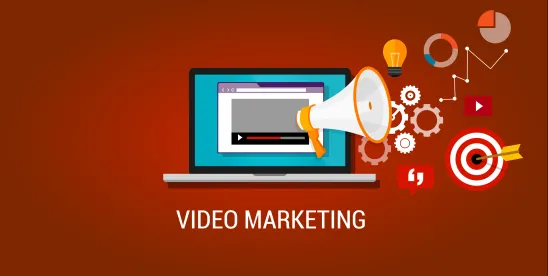Over the past few years, I’ve seen firsthand the transformative power of video content in amplifying my presence and establishing myself as a subject matter authority. By strategically utilizing video on LinkedIn and other platforms, I’ve effectively built my brand and significantly grown my business.
Video content is now an essential tool for professionals in every industry, including the legal field. For mediators, arbitrators and lawyers, incorporating video into your marketing strategy can dramatically enhance your online presence and create deeper connections with your audience. By showcasing your expertise through video, you can build trust, engage more effectively and leave a lasting impression on potential clients.
Why is Video So Powerful?
- Engagement: Videos are more engaging than text. They capture attention quickly and hold it longer, making it easier to convey your message effectively.
- Trust Building: Seeing and hearing a professional speak helps build trust and credibility. It humanizes your brand and allows potential clients to feel more connected to you.
- SEO Benefits: Search engines love video content. Embedding videos on your website can improve your SEO, making it easier for potential clients to find you online.
- Information Retention: Studies show that people remember information better when it is presented in a video format compared to text. This means your message is more likely to stick with your audience.
Where to Post Your Video Content
- Website: Embed videos on your homepage, about page and practice area pages to provide visitors with a comprehensive understanding of your services.
- Social Media: Platforms like LinkedIn, YouTube, Facebook and Instagram are ideal for sharing video content. Each platform has its unique audience, so tailor your content accordingly.
- Email Newsletters: Including video links in your emails can increase click-through rates and engagement.
- Legal Directories: Upload videos to your profiles on legal directories to stand out from the competition.
What to Do with Your Video Content
- Repurpose: Convert your videos into blog posts, social media snippets and podcast episodes to reach a broader audience.
- Share: Use videos in presentations, webinars and at conferences to add a dynamic element to your sessions.
- Promote: Run video ads on social media and Google Ads to attract new clients and grow your practice.
Creating Video Content from Existing Materials
Repurposing existing materials into video content is a highly efficient way to leverage your current resources. Here’s how:
- Presentations: Record your live presentations and edit them into shorter, focused videos. This allows you to reach a broader audience who couldn’t attend in person.
- Social Media Posts: Identify your most popular social media posts and expand on those topics in a video format. This can provide more value and insight to your audience.
- Slides: Turn your PowerPoint or slide deck presentations into narrated videos. You can add voiceovers explaining each slide, making it more engaging.
- Articles and Blogs: Summarize the key points from your articles and blogs into short, informative videos. This can help you reach audiences who prefer visual content over reading.
- Emails: Transform informative or frequently asked questions (FAQs) from your emails into video tips or updates. This not only saves time but also adds a personal touch.
- Any Document: Utilize any informative document, like white papers or reports, to create succinct video summaries that highlight key insights.
Repurposing Video Content
Once you have your video content, it’s crucial to maximize its reach by repurposing it across different platforms:
- Social Media Snippets: Break longer videos into shorter clips for social media. These bite-sized pieces are perfect for capturing attention and driving engagement.
- Blog Transcripts: Convert your video content into written transcripts for blog posts. This can help with SEO and provide an alternative format for those who prefer reading.
- Podcast Episodes: Extract the audio from your videos to create podcast episodes. This allows you to reach an audience that prefers listening over watching.
- Infographics: Use the key points from your videos to create infographics and visual aids. These can be shared on social media and included in presentations.
- Email Campaigns: Embed video highlights in your email newsletters. This can increase click-through rates and keep your audience engaged.
Topics for Your Video Content
So, you’re ready to dive into video content, but what should you talk about? The good news is that inspiration is everywhere. Here are some key topics to consider for your videos:
- Educational Videos: Explain common legal processes and terminology in simple terms to help demystify the legal system for your audience.
- Case Studies and Testimonials: Share success stories and client testimonials to build credibility and showcase your expertise.
- Legal Updates: Discuss recent changes in laws or regulations that impact your clients.
- Q&A Sessions: Answer frequently asked questions to provide valuable insights and establish yourself as an authority in your field.
- Behind-the-Scenes: Give a tour of your office or introduce your team to create a personal connection with your audience.
Best Lengths for Videos
- Short Form (1-2 minutes): Perfect for social media posts and quick updates.
- Medium Form (3-5 minutes): Ideal for more detailed explanations and tutorials.
- Long Form (10+ minutes): Suitable for webinars, detailed case studies and comprehensive discussions on complex topics.
Equipment You Will Need
Creating high-quality video content doesn’t require a lot of expensive equipment. Here’s what you’ll need:
- Smartphone: The latest iPhone is a great choice for high-quality video.
- Tripod: Essential for stable shots, easily available on Amazon.
- A USB lavalier mic: A lavalier mic can be a great tool to help with sound quality.
- The Pivo: You may want to consider a Pivo as you get more comfortable with video content. Pivo is a smart interactive pod that helps content creators capture dynamic, high-quality videos and photos. It pairs with your smartphone and offers various features that make it easier to create professional-looking content without needing a dedicated camera crew. A Pivo tripod is also a great tool to use with it.
- Apps: Use ChatGPT for script ideas, the Captions app for adding subtitles and CapCut for editing your videos.
How ChatGPT Can Help in Repurposing and Creating Video Content
Leveraging AI tools like ChatGPT can significantly enhance your efficiency in creating and repurposing video content. Here’s how:
- Script Writing: ChatGPT can assist in drafting video scripts based on your ideas, presentations, articles or any other written material. This ensures your videos are well-structured and articulate.
- Content Repurposing: If you have existing content such as blog posts, social media updates or emails, ChatGPT can help transform these into engaging video scripts. This means you can quickly convert your written content into a different format without starting from scratch.
- Generating Ideas: ChatGPT can brainstorm and suggest topics for your video content based on current trends, frequently asked questions from clients or updates in the legal field. This can save you time and provide you with a steady stream of content ideas.
- Editing Assistance: Once you have your video script, ChatGPT can help you refine and polish it, ensuring your message is clear and professional.
- Efficiency: By automating parts of the content creation process, ChatGPT allows you to focus on the actual recording and production of your videos, thus speeding up the overall workflow.
Final Thoughts
Incorporating video content into your marketing strategy is not just an option—it’s a necessity for mediators, arbitrators and lawyers aiming to stay competitive in today’s digital landscape. Video content is a powerful tool that can significantly enhance your ability to connect with your audience, build trust and convey your expertise in a more engaging and memorable way. By leveraging the power of video, you can not only improve your marketing efforts but also position yourself as a leader in your field, attract more clients and ultimately grow your practice.




 />i
/>i

